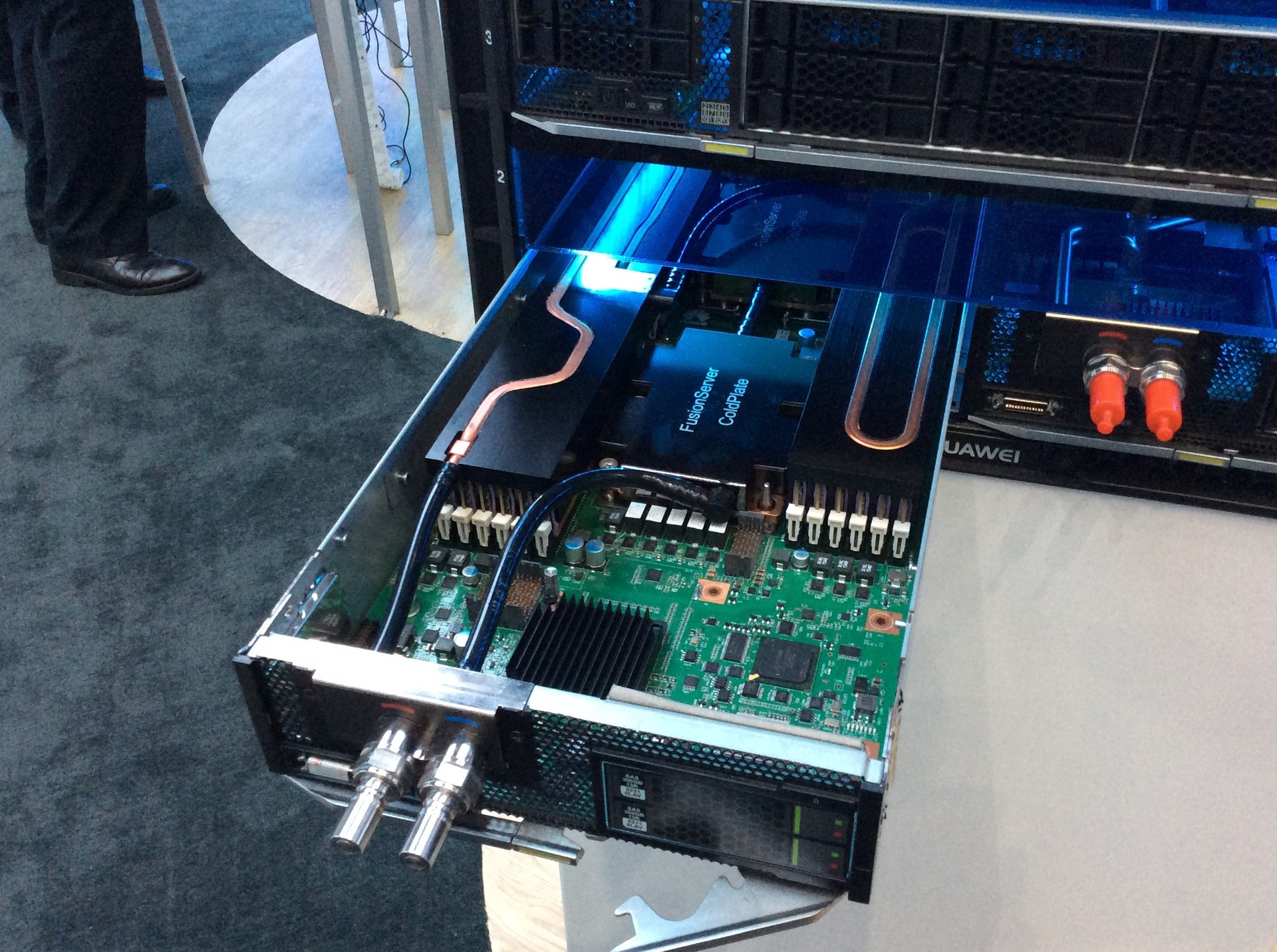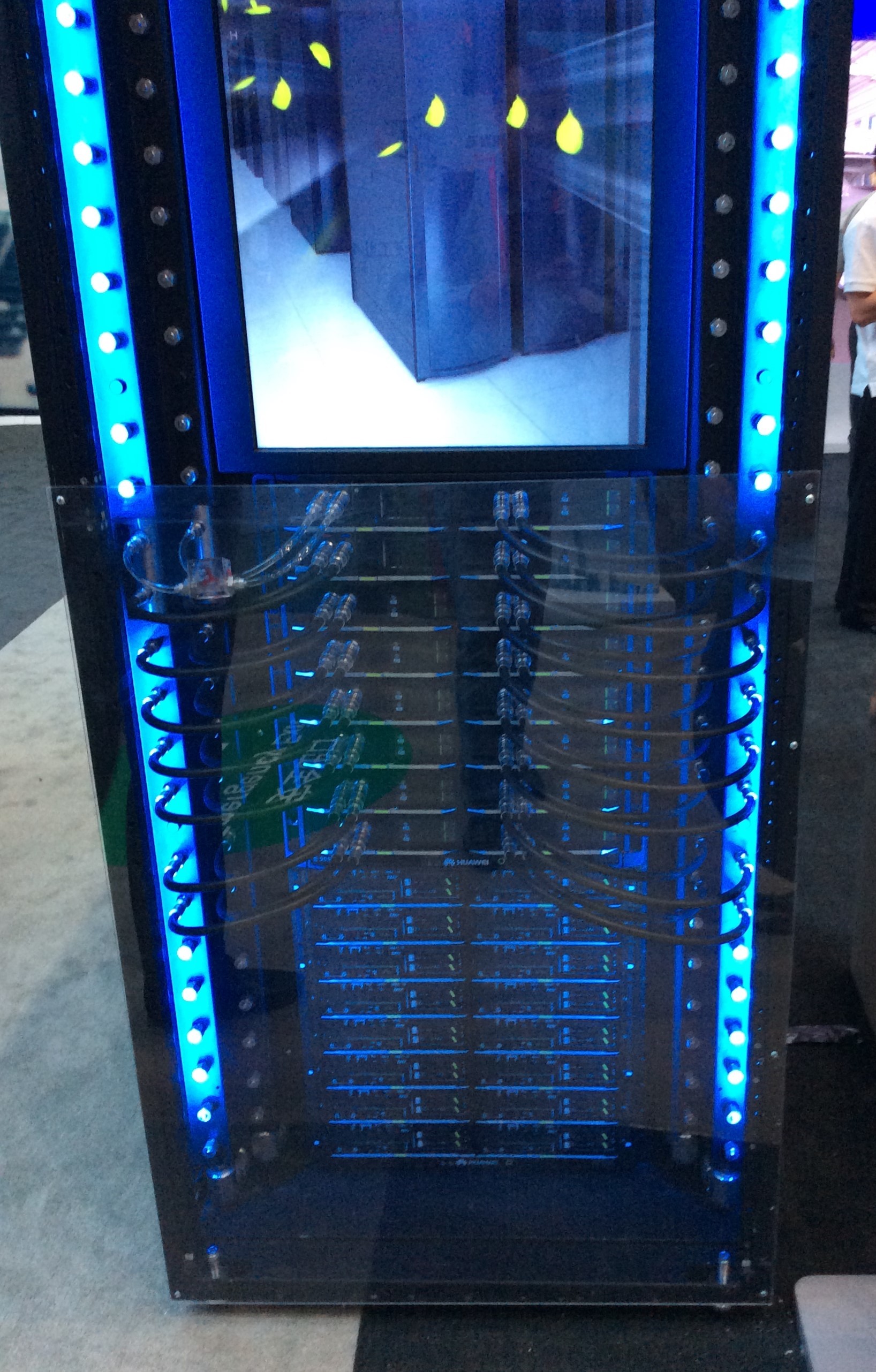Huawei Connect 2016 Shanghai
Last week, the annual Huawei Connect conference was held in Shanghai, dedicated to the achievements of the eponymous vendor, its partners and customers. We offer you a brief overview of the new products presented at this event.

KunLun
A lot of attention was paid to the flagship product in the server line - Huawei KunLun, a unique platform that allows you to combine up to 32 Xeon E7v3 processors and up to 24 TB RAM in one system. The enhanced server features in terms of ensuring continuous operation were especially emphasized - a hot swap of processors and memory was demonstrated at the stand (it really works!).

Good question: Does anyone need such computational power (up to 576 Xeon E7v3 cores in one server)? Perhaps a little. But such amounts of RAM (up to 24 TB) may become relevant in the coming years due to the development of in-memory computing technologies (see habrahabr.ru/company/jetinfosystems/blog/260455 ). By the way, KunLun certification for SAP HANA is just around the corner. Opportunities to ensure continuous operation of the server platform for such tasks will be most welcome - to restore the functionality of such a system after a reboot, you will need to read up to 24TB of data from the disk array into memory. For example, at a speed of 1Gb / sec it will take almost 7 hours. Better not to reboot.
Liquid cooling systems
Blade systems are well known for their high server density. It’s a pity that in a “normal” data center you can’t put a lot of baskets in one rack (neither electricity has failed so much, nor, most importantly, doesn’t take so much heat) and high density is rarely achieved. Huawei offers liquid cooling option for its E9000 blade systems:

')
The solution allows you to place in the rack 3 chassis E9000 (total up to 96 2-processor servers per rack) with a total power of 45 kW. The inlet fluid temperature can reach 45 degrees, PUE 1.2.

Future plans
An upgrade is planned for all server lines after the release of the next generation of Xeon E5 processors.
Until the end of the year, it is planned to release a compact high-density platform (new generation X6000) - 4 server nodes in 2U (similar to HP and Dell).
In addition, next year, entry-level uniprocessor servers (at least 2 CPUs) and a dedicated chassis with the ability to install a large number of NVMe disks are expected to be released.
Huawei Dorado V3
At the conference, was presented the announcement of a new generation of All-Flash storage from Huawei - Dorado V3. The product has incredible performance figures of 4 million IOPS with a response time of 0.5ms, as well as support for inline compression and data deduplication.
We should also note the built-in support for active-active data centers: two arrays from different sites can be combined into a single virtual storage system that simultaneously provides parallel access and synchronous data replication between data centers.
An interesting replication capability is maintained from Dorado to the “classic” Huawei storage systems (this can be useful for creating technological copies of data with low storage costs, for example, for a reporting system or for implementing RLCD projects with a low-cost focus). Exit - in March 2017. Be sure to take the tests and tell you about the results as soon as such an opportunity.

Software defined storage
Huawei's new version of SDS solution has been released - Fusion Storage 6.0. The product allows you to create distributed data warehouses based on servers with local disks with block, file or object access with deduplication support.
Vibrations
On the shaker table, Huawei demonstrated the high quality of its products. It was interesting to look at the effect of vibrations on HDD performance:
Source: https://habr.com/ru/post/309112/
All Articles